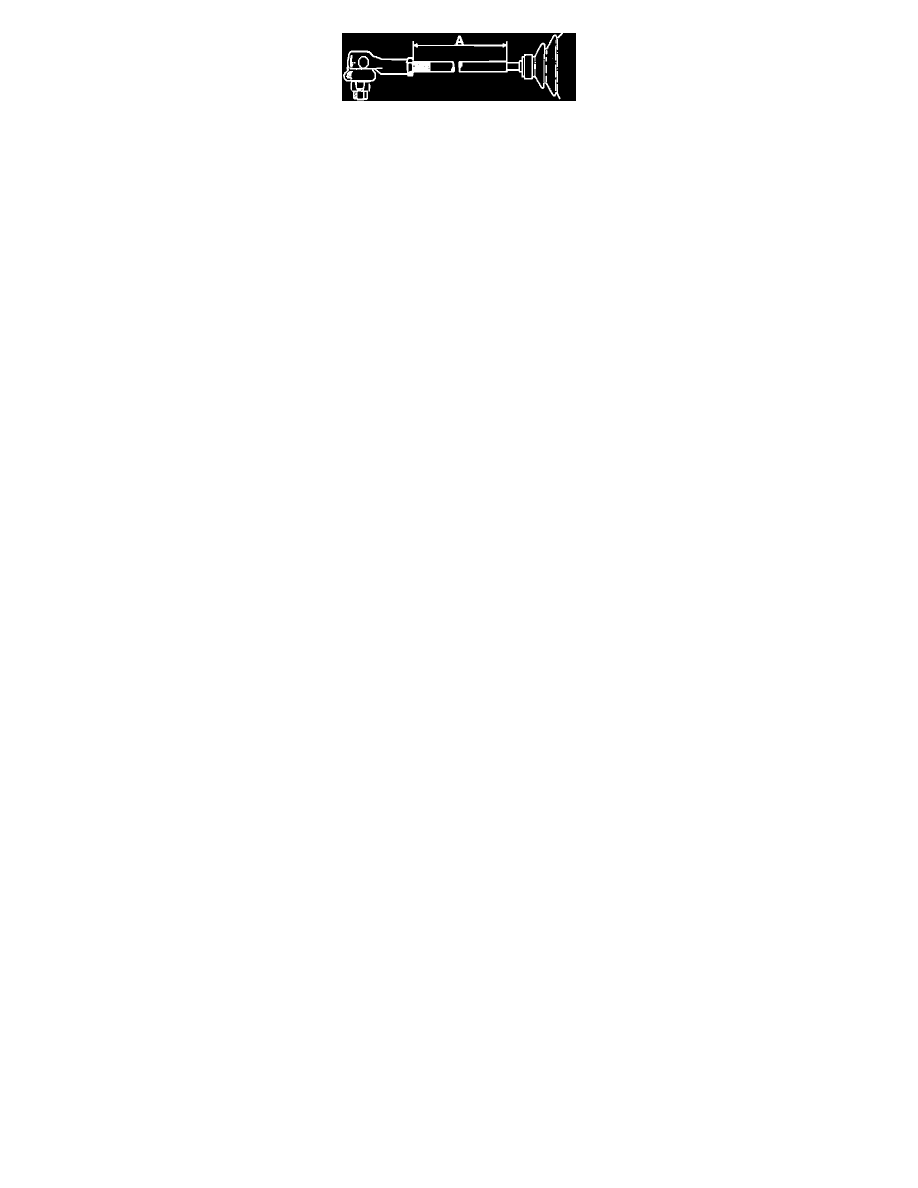900 Turbo Convertible L4-1985cc 2.0L DOHC Turbo EFI (1994)

Fig. 3 Toe-in Adjustment
1. Roll vehicle straight forward on level floor and stop without using brakes.
2. Take reading at dimension A, Fig. 1, using toe-in gauge between the front wheel rims level with axle. Mark measurement parts with chalk.
3. Roll vehicle forward until chalk marks are level with, but behind, axles and take reading of B, Fig. 1. Any necessary adjustment is made by
altering length of tie rod.
4. Remove rubber bellows to track rod retaining clip.
5. Push rubber bellows toward steering gear housing to expose groove in which bellows seals.
6. Measure distance A, Fig. 1. Distance A should not exceed 2.03 inches (52 mm).
7. Perform steps 4 through 6 on opposite side of vehicle, then compare measurements calculated at each side of vehicle. Difference between
measurements must not exceed 0.114 inch (3 mm).
8. If necessary to adjust, loosen nut on outer end of tie rod, then rotate tie rod until distance A, is as specified.
9. Torque tie rod end locknuts to 46-56 ft. lbs.
Camber
Camber cannot be adjusted. If setting is not within specified limits, defective components must be replaced.
Toe-In
Rear toe-in is not adjustable. If setting is not within specified limits, check and replace defective components.
Checking and Adjustment Before Wheel Alignment
Checking and adjusting if it is suspected that the alignment of the front wheels is incorrect (as indicated by the need to forcibly hold the steering wheel
in a straight ahead position, abnormal tire wear, imprecise steering and inferior road holding, etc.), the following procedures should be followed:
1. Check the tire pressures.
2. Check the wheels, front wheel bearings, suspension arm mountings and ball joints, inner track rod bushes and track rod ends. Adjust or replace any
defective parts as necessary to eliminate any symptoms caused by worn components.
3. Inspect the dampers and replace any that are damaged or defective, together with any worn rubber bushes.
4. If the car has been involved in a collision, has run off the road or the like, repair any resulting damage before checking the front wheel alignment.
5. To avoid misleading results when using wheel alignment equipment, rock the car firmly a few times before starting to check the alignment.
NOTE:
^
When checking front wheel alignment, the car should be unladen, with nobody inside it, but with a full tank of fuel and on a perfectly level
surface.
^
A variety of wheel-alignment equipment is available for mounting on the wheel rim or directly on the stub axle. For the correct use of such
equipment, refer to the manufacturer's instructions.
